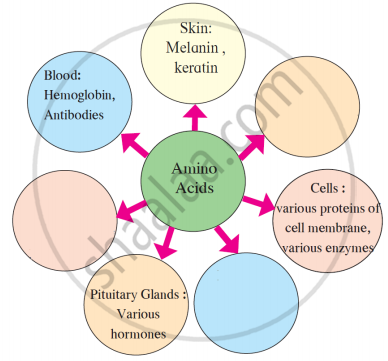Advertisements
Advertisements
Question
Write definition.
Cellular respiration
Solution
Cellular respiration: Cellular respiration is a process in which respiratory substrates such as starch, glucose, fats and proteins are broken down to release energy. This energy is then trapped for the synthesis of ATP to release CO2.
APPEARS IN
RELATED QUESTIONS
At the end of glycolysis, ______ molecules are obtained.
Write the correct option from the given multiple options.
We get ...................energy from carbohydrates.
Fill in the blank with a suitable word.
In the prokaryotes ______ molecules of ATP are formed per molecule of glucose oxidised.
Fill in the blank with a suitable word.
F1- F0 particles participate in the synthesis of _______.
Answer the following question.
When and where does anaerobic respiration occur in man and yeast?
Protein located in bones is ___________.
We get __________ energy from lipids.
Which molecules are formed during the glycolysis process?
Which molecules are formed after whole oxidation of Acetyl co-enzyme A?
- What are vitamins?
- Classify them according to their solubility.
- Give one example of each type as per above classification.
Which hormones are formed from the fatty acids?
Why is water an essential nutrient?
Complete the following concept map.

During which of the following steps of glycolytic pathway ATP is directly formed?
- 3 - phospboglyceric acid to 2 phosphoglycerate
- Phosphoenolpyruvate to pyruvic acid
- 1, 3 - bisphosphoglyceric acid to 3 phosphoglycerate
- Fructose 1, 6 - bisphospbate to glyceraldehyde - 3 - phosphate
Which of the following is TRUE with respect to ATP?
Where does the oxidative phosphorylation occur?
Complete the following analogy and select the correct option.
Respiration: Catabolic process:: ______ : Anabolic process
